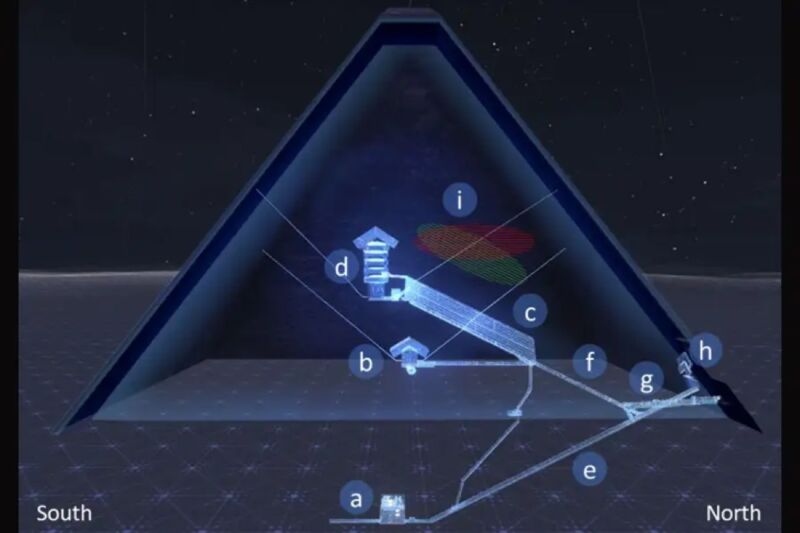
Enlarge / Map of the known corridors and rooms inside the Great Pyramid of Giza. Evidence of a secret corridor was detected in 2016 behind the famed chevron blocks on the north face (h). Another mysterious large void (i) was discovered in 2017—a possible hidden chamber. (credit: Procureur et al., 2023)
In 2016, scientists using muon imaging picked up signals indicating a hidden corridor behind the famous chevron blocks on the north face of the Great Pyramid of Giza in Egypt. The following year, the same team detected a mysterious void in another area of the pyramid, believing it could be a hidden chamber. Two independent teams of researchers, using two different muon imaging methods, have now successfully mapped out the corridor for the first time, according to a new paper published in the journal Nature Communications. Zahi Hawass, Egypt’s former antiquities minister, called it "the most important discovery of the 21st century."
As we've reported previously, there is a long history of using muons to image archaeological structures, a process made easier because cosmic rays provide a steady supply of these particles. An engineer named E.P. George used them to make measurements of an Australian tunnel in the 1950s. But Nobel-prize-winning physicist Luis Alvarez really put muon imaging on the map when he teamed up with Egyptian archaeologists to use the technique to search for hidden chambers in the Pyramid of Khafre at Giza. Although it worked in principle, they didn't find any hidden chambers.
There are many variations of muon imaging, but they all typically involve gas-filled chambers. As muons zip through the gas, they collide with the gas particles and emit a telltale flash of light, which is recorded by the detector so scientists can calculate the particle's energy and trajectory. It's similar to X-ray imaging or ground-penetrating radar, except with naturally occurring high-energy muons rather than X-rays or radio waves. That higher energy makes it possible to image thick, dense substances like the stones used to build pyramids. The denser the imaged object, the more muons are blocked, casting a telltale shadow. Hidden chambers in a pyramid would show up in the final image because they blocked fewer particles.
Read 9 remaining paragraphs | Comments
